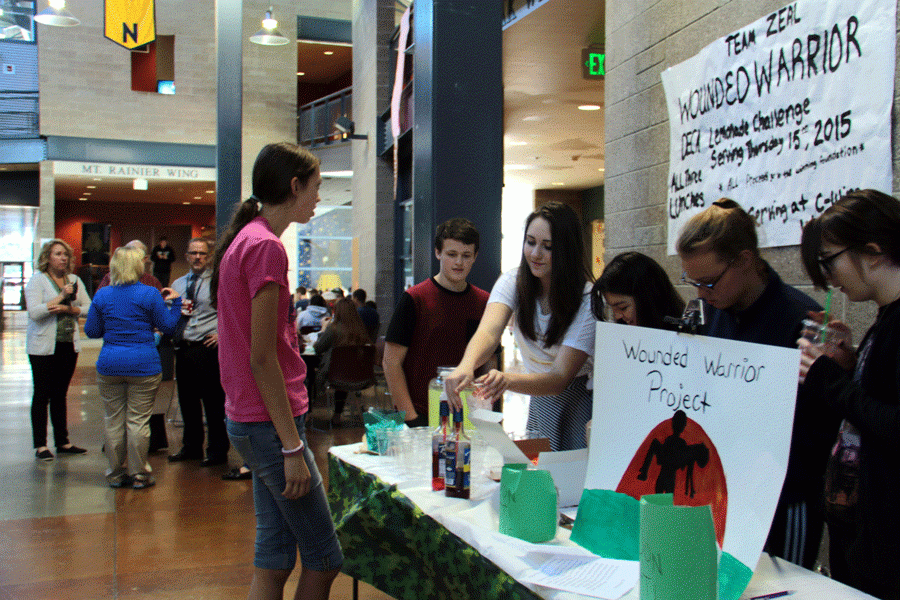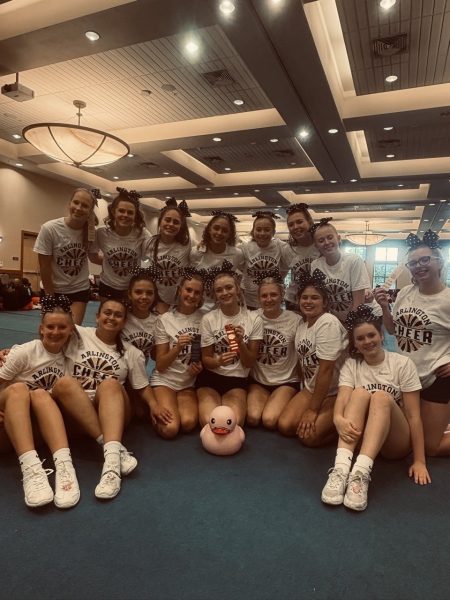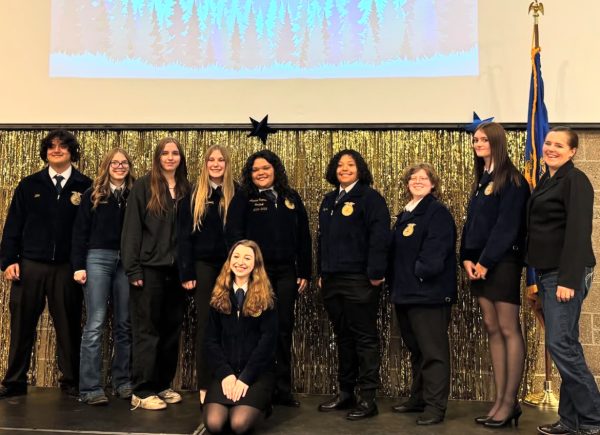Club Fundraising To-Do’s
Students from DECA sell lemonade for the chance to support a charity of their choice.
As the first quarter comes to a close, many clubs and organizations are coming up with new ideas on how to raise funds for the second quarter.
When it comes to fundraising, clubs have to really think about the best and most effective ways of achieving their goals. Whether their goal is to raise enough money to afford new equipment, pay for club t-shirts, or even to raise money for organizations that benefit the surrounding community, it comes down to how to reach these goals.
So what should be considered when pitching fundraiser ideas? There are three main ideas that should be kept in mind:
1.) Cost. How much it will take to pull of the fundraiser?
2.) What you are fundraising. Is it money? Clothing? Food? Something else entirely?
3.) Your audience.
Answering these questions will help decide what kind of fundraiser a club will undertake.
It might sound strange to talk about how much a fundraiser will cost when most of the time the club is fundraising money. But, this step is absolutely vital.
One such example is FFA. They recently started their second annual Holiday Wreath/Tree fundraiser. According to senior Makayla Rice, pne of the fundraiser’s biggest appeals is that it’s low cost, as adviser, Ms. Nemnich, has a connection at a tree farm that allows them to use extra scraps to make the wreaths. If the club did not have this connection, the idea would have to either be abandoned, they would have to buy the wreaths and trees, or get them donated.
It should also be kept in mind that there might be items that are going to be sold. According to the United States Department of Agriculture’s (USDA) website, the 2010 Healthy Hunger-Free Kids Act established nutritional guidelines on the foods and beverages sold at school, which includes those sold in fundraisers. The USDA stated that the rationale behind this was to “balance the needs of schools to conduct occasional fundraisers, while still ensuring that students have access to healthier foods and beverages during the school day.” This standard makes it harder for popular food fundraisers to take place during the school, such as the Krispy Kreme sales. Yet, it does not ban food fundraisers that take outside of school of school hours. Some other alternatives are a car wash, like the one done by band, or a Papa Murphy’s fundraiser.
The last thing that is important to clubs is knowing their audience. In the case of many of the clubs here, their main audience is the student body. Clubs have to know what students are interested in and develop an angle that will incorporate a majority of the student population. Clubs have to make sure that what they are selling is affordable to students or easy for them to participate in. For DECA, one of their biggest fundraisers is the Krispy Kreme fundraiser. According to DECA officer Rachel Hunter (’17), that fundraiser has “been successful.”
“I think that it’s something we’d continue doing and as soon as it gets to the point that it’s not successful, try something new,” said Hunter.
Throughout the year, we will see many different clubs fundraising at various times. Two seasons that are usually big for clubs are Christmas and Valentine’s Day. Even those are still awhile away, students should always be on the lookout for next fundraiser to show our support of their fellow classmates.
“It’s what would be the most successful, what’s the newest, what’s the best for all of us,” said Hunter








